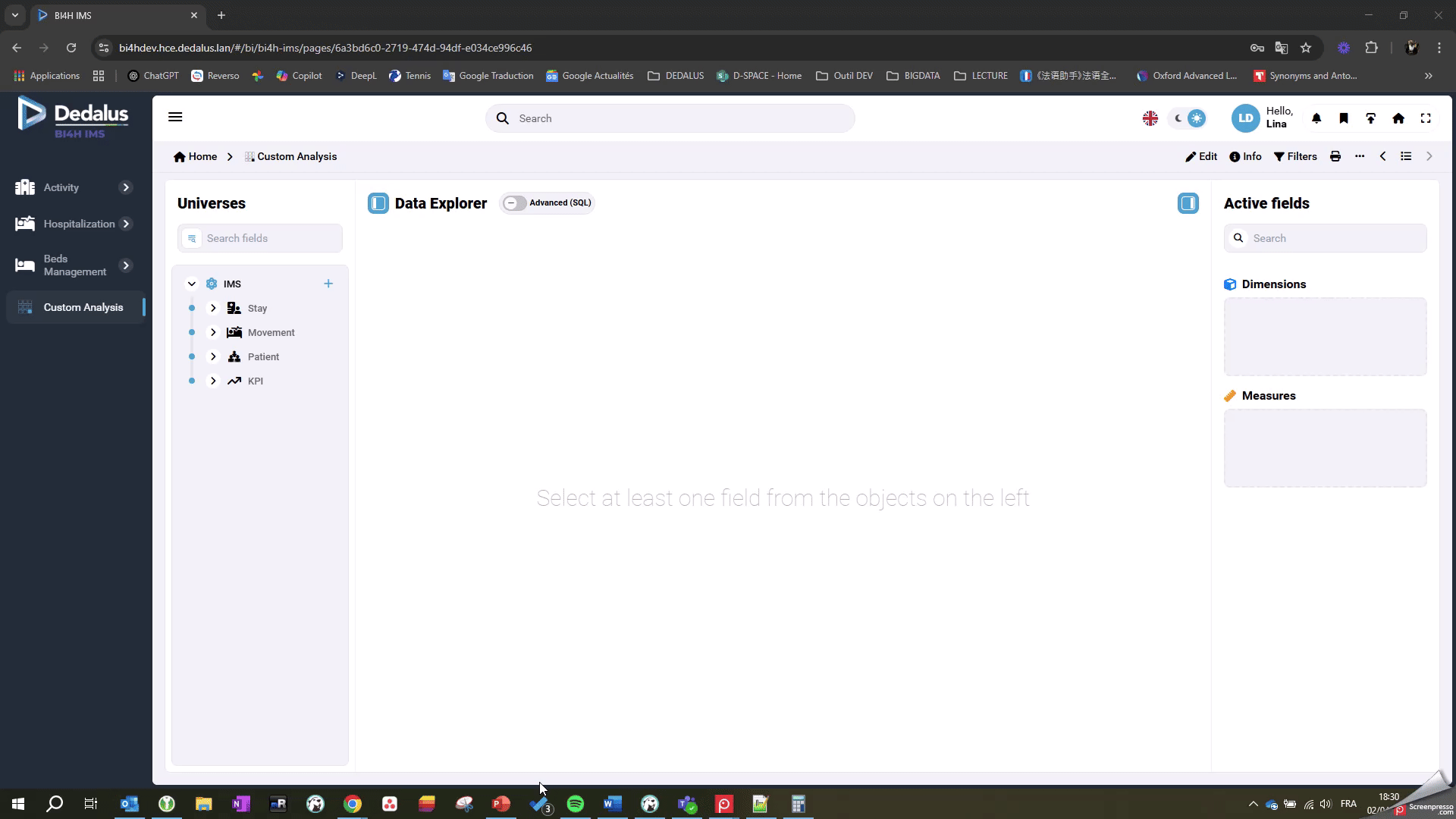Conditions sections
Reading time:
CONDITIONS
The development of conditions follows the same logic as the interactions of filters in the dashboards: numerical comparisons, “Like”, selection of time intervals, etc.
To add a new condition, click on the 'Add a condition' button, and then click on the empty box (①), a list of available fields will be proposed, you can enter some keywords to help you (②), and then click on the field to select it (③).
Depending on the dimension format selected, the options offered may be different.
Dimensions selected with string format
The yellow button is located to the right of the selected dimension allowing you to choose the single value or multi values option.

'Search' allows you to do a search and choose a single value

'Select' allows you to select several values from a list

and the operators proposed for the strings are:
- Equal to
- Not equal to
- Contains
- Does not contain
- Starts with
- End by
- Is null
- Is not null
Dimensions selected with digital format
The yellow button to the right of the selected dimension allows you to enter a value manually (Range) or select a value from a list (Select)

and the operators proposed for numerical variables are:
- Better than
- Greater than or equal to
- Less than
- Less than or equal to
- Equal to
- Not equal to
- Between
- Is null
- Is not null
Dimensions selected with date format
A calendar is provided to facilitate entry.

and the operators proposed for date variables are:
- After
- Equal to or after
- Before
- Equal to or before
- Equal to
- Not equal to
- Between
- Is null
- Is not null
You can add several simple conditions in the query,

or groups of complex conditions with AND or OR logic.

You can delete the filter by clicking on the 'trash' button which is located to the right of each condition.
AGGREGATION CONDITIONS
In this section we can add the HAVING condition on the measures.
OTHER
'Limit': we can set the number of elements we want to consider.
'Group by': instead of having many rows with the same value in a specific column, with 'group by' we get a single row for each unique value.
Once the extraction is configured, click “Run Query” in the Run menu.
The result is then displayed in a paginated and interactive manner. It is exportable and also contains a search engine.
The total number of rows is provided in addition to the results.

To save an extraction, click on the “Save” icon.

Saved queries are categorized in the view.
Demonstration:

